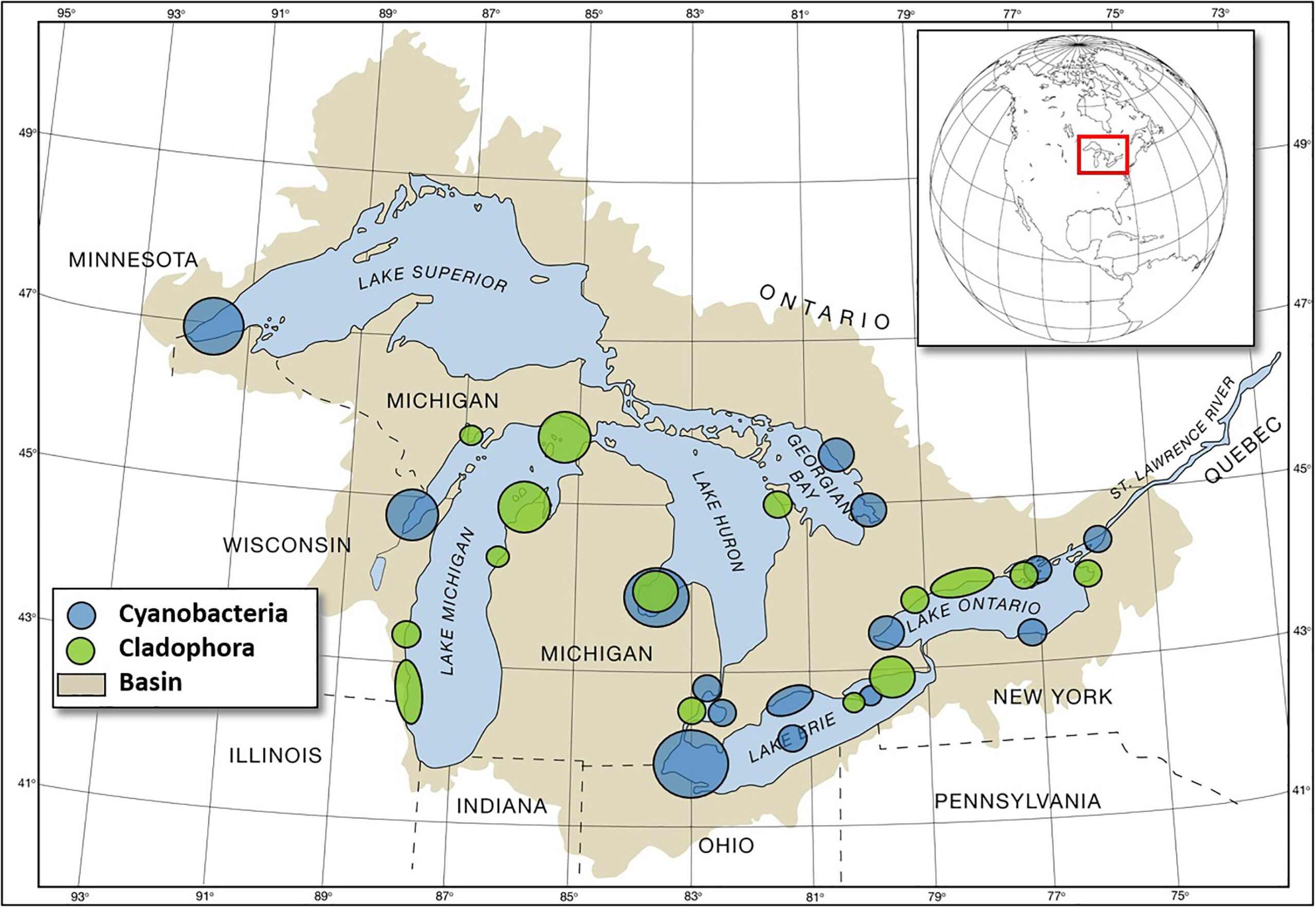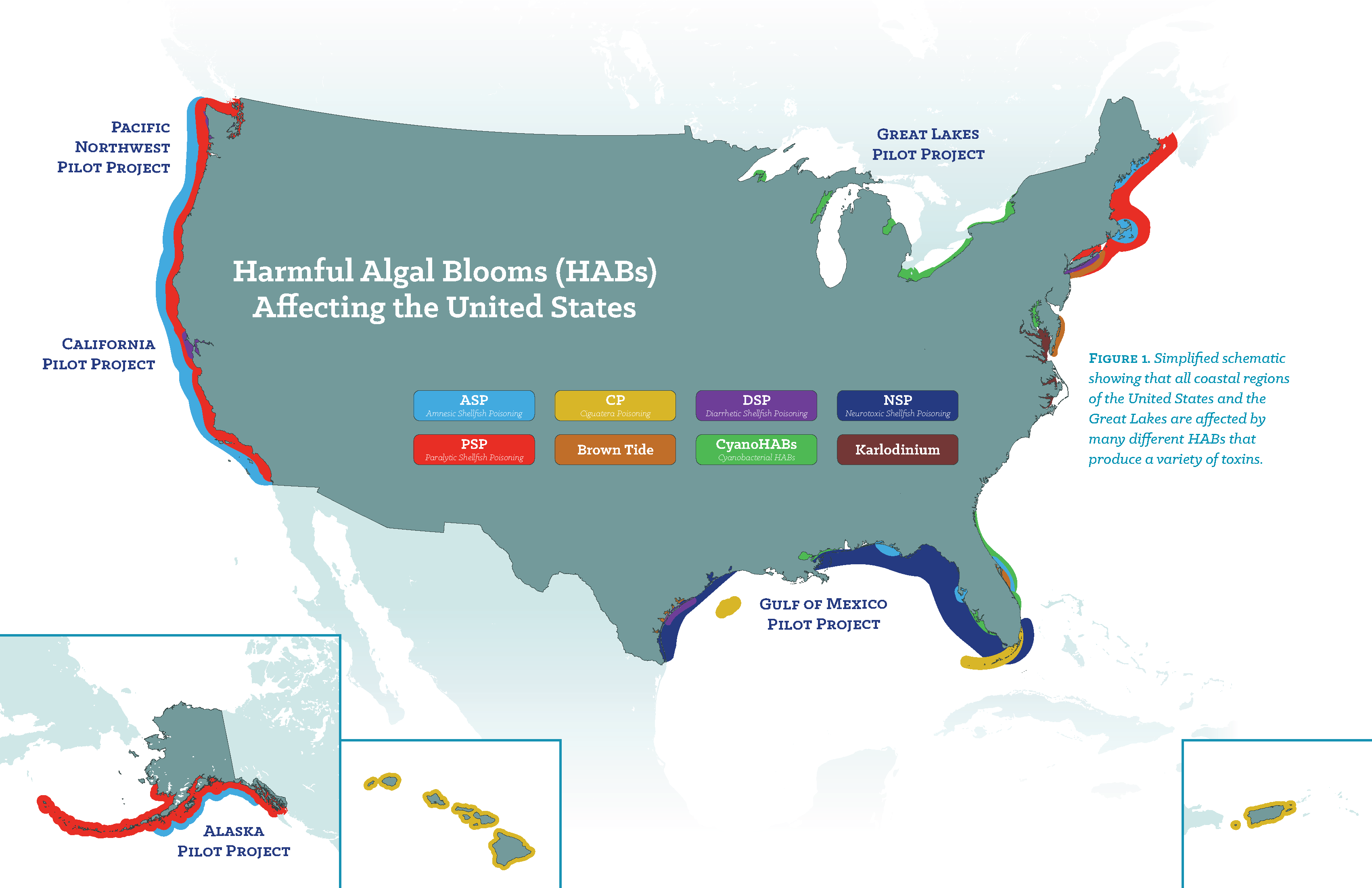Harmful Algal Blooms
Helping people understand a recurring threat.
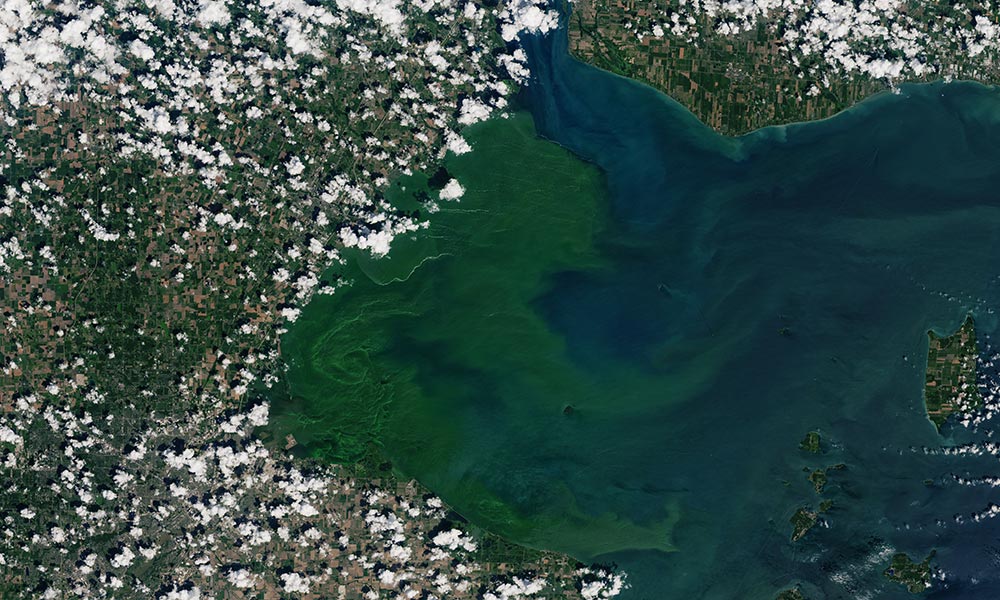
What are HABs?
They are a growing global threat for both sea and freshwater systems. They can negatively impact ecosystem health, economic activity, as well as public health.
“Harmful algal blooms, or HABs, occur when colonies of algae — simple plants that live in the sea and freshwater — grow out of control and produce toxic or harmful effects on people, fish, shellfish, marine mammals and birds. The human illnesses caused by HABs, though rare, can be debilitating or even fatal.” (NOAA)
In the Great Lakes, as of now, HABs have been observed in all five lakes to varying degrees. Lake Erie, in particular, has been impacted by algal blooms for many decades.
Some have triggered hypoxic events with tens of thousands of dead fish, while others have produced toxins with concentrations that were many times over the World Health Organization limit for recreational contact and/or safe drinking water (e.g., HABs were responsible for the 2014 shutdown of the water supply to the City of Toledo, OH).
The intensity of algal blooms has increased in more recent years, and climate change might exacerbate not just their intensity but also their toxicity in years to come.
HABs have been reported in all five Great Lakes. Image by NOAA Great Lakes Environmental Research Lab (GLERL)/OAR
“Freshwater harmful algal blooms (HABs) are an annual occurrence during the summer and fall in the nearshore areas of the Great Lakes, as well as in inland waterbodies. These HABs are largely made up of one or more species of cyanobacteria, also known as blue-green algae (e.g., Microcystis and Dolichospermum). HABs have the potential to disrupt ecosystems, impact water and air quality, and deter recreation. They can also produce toxins (e.g., microcystin, anatoxin — collectively referred to as HAB toxins) that can be harmful to human health.” (HABs Collaborative)
GLOS supports HAB monitoring
Since 2015, with support from Ohio EPA and the US Integrated Ocean Observing System (IOOS), GLOS, with a wide range of partners, has worked to procure, deploy, and/or integrate data from water quality instrumentation to provide real-time HABs-related data to stakeholders.
Major projects:
2020-Present: HAB Observing Network (HABON) (jump to section)
2018-2021: Building a HAB Early Warning System in Lake Erie (OTT) (jump to section)
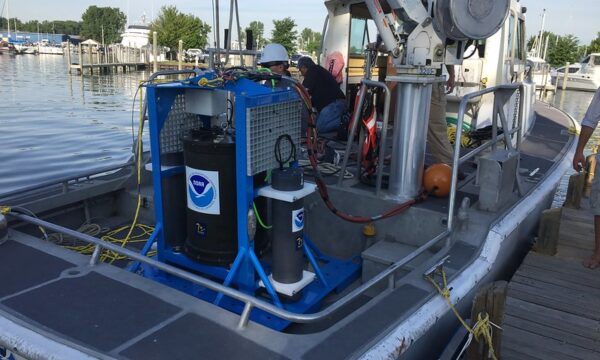
An NOAA Environmental Sample Processor (ESP) awaits deployment in Lake Erie. Photo by NOAA GLERL
HAB Observing Network (HABON)
2020 – Present
GLOS and several collaborators have worked to test and deploy technologies that provide real-time data to characterize the presence and toxicity of HABs and contribute to the development of an early warning system.
This Great Lakes HABON pilot project was funded by the National HAB Observing Network (NHABON) and works to:
- Measure HABs species and toxins in western Lake Erie using environmental sample processors (ESPs) deployed at fixed locations or integrated with uncrewed systems. (NOAA GLERL, NOAA National Centers for Coastal Ocean Science (NCCOS), and Monterey Bay Aquarium Research Institute)
- Test an autonomous, in-situ holographic imaging system (AUTOHOLO) for the monitoring of HABs. (Florida Atlantic University, University of Minnesota-Duluth, Michigan Tech Research Institute, and NOAA GLERL)
- Expand real-time HABs related observations in Green Bay, WI. (University of Wisconsin-Milwaukee, University of Wisconsin-Green Bay, NewWater, Cellcom, and Aexonis)
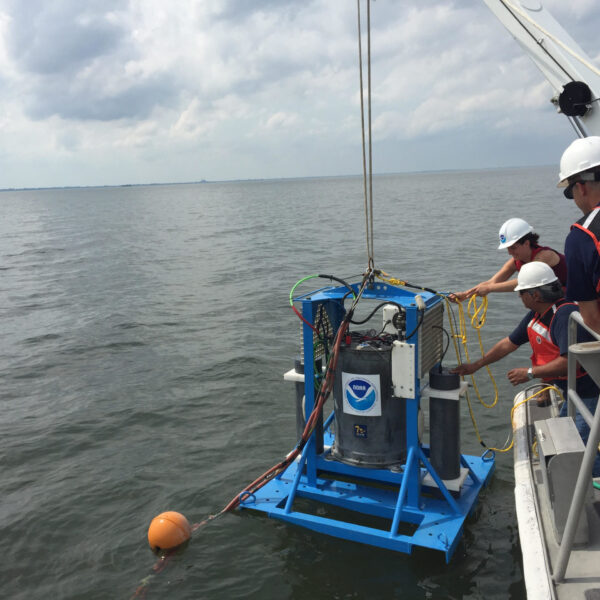
A NOAA crew deploys an ESP in Lake Erie. Photo by NOAA GLERL.
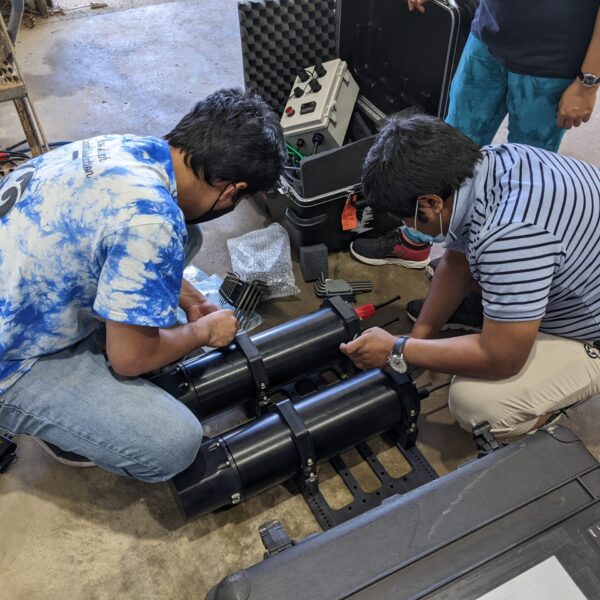
Researchers work on an AUTOHOLO imaging device. Photo by Aditya Nayak, Florida Atlantic University.
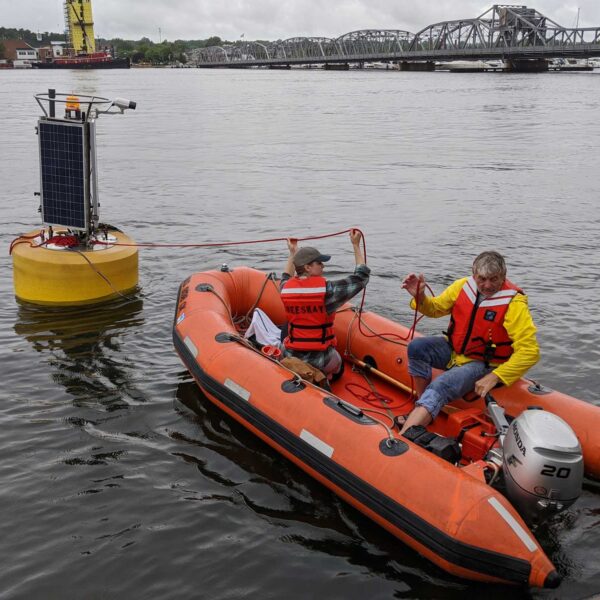
A crew from the University of Wisconsin-Milwaukee deploys a buoy in Green Bay. Photo by University of Wisconsin-Milwaukee.
What is the National HAB Observing Network (NHABON)?
NHABON is a collaboration between the Integrated Ocean Observing System (IOOS), NOAA NCCOS and partners across the US that aims at providing timely and accurate HABs data and information to inform management decisions and minimize HABs-related public health impacts.
“NHABON is needed to integrate local, state, regional, and federal HAB observing capabilities and deliver products operationally. Implementation of NHABON would:
- Enable HAB detection, early warning, and forecasting;
- Leverage economies of scale and information and technology transfer between regions;
- Determine baselines and discern patterns/trends to assess the impacts of climate change, eutrophication, and other environmental forcings;
- Be tailored to the unique environmental and community needs of each region; and
- Provide observations to support state, tribal, and national missions of understanding, predicting, mitigating, and managing HABs.” (Implementation Strategy for a National Harmful Algal Bloom Observing Network)
Building a HAB Early Warning System: Ocean Technology Transition Project
2018 – 2021
In Lake Erie, harmful algal blooms (HABs) typically begin as nutrient-rich water from the Maumee River drains into the warm, shallow western part of the lake.
These conditions enable the growth of a type of algae that creates a toxin called microcystin. In 2014, such a bloom caused the microcystin levels in Toledo tap water to exceed what is recommended by the World Health Organization, triggering a two-day “Do Not Drink” advisory.
Thanks to a grant through the IOOS Ocean Technology Transition project, GLOS partnered with seven other organizations to build an early warning system that will help to address this pressing regional health and safety concern.
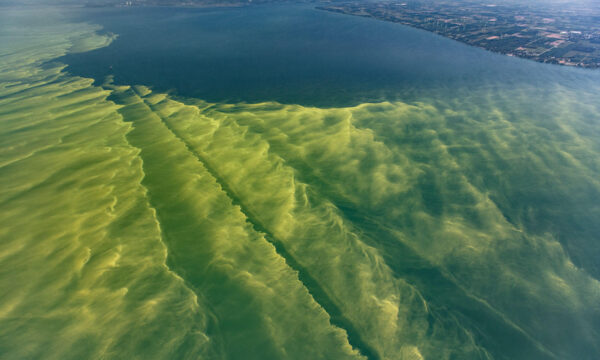
An algal bloom floats in western Lake Erie. Photo by Aerial Associates Photography, Inc. by Zachary Haslick
Project partners include:
- Several Lake Erie drinking water plants
- NOAA Great Lakes Environmental Research Laboratory
- NOAA National Centers for Coastal Ocean Science
- LimnoTech
- The Ohio State University
- Cleveland Water Alliance
- Cooperative Institute for Great Lakes Research
- RPS Group
The project’s goal was to create a system that combined live data from forecasts and a network of in-water sensors and other monitoring equipment and turned that data into alerts to keep people informed in real-time as harmful algal blooms (HABs) develop.
The project team:
- Surveyed hundreds of stakeholders to understand their warning needs and created a report.
- Deployed and serviced multiple water quality sensors (video) throughout the affected areas.
- Developed a prototype of the software necessary to receive and process sources of data and send text alerts.
- Worked toward integrating data from toxin-sensing environmental sample processors (ESPs).
- Worked toward integrating data from the NOAA HAB forecast.
- Created an operational plan that details the current system and charts a course for improvements, including
In the future, by combining these separate data sets, including from sensors, ESPs, and modeled forecasts, alerts can become a high-value, unified decision support tool delivered straight to stakeholders so they keep themselves and their communities safe.
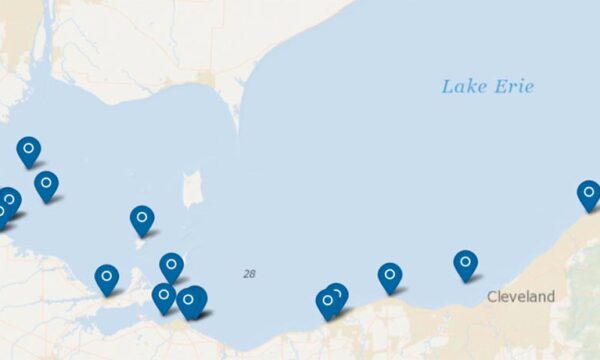
A network of sensors relays real-time information on where algal blooms form.
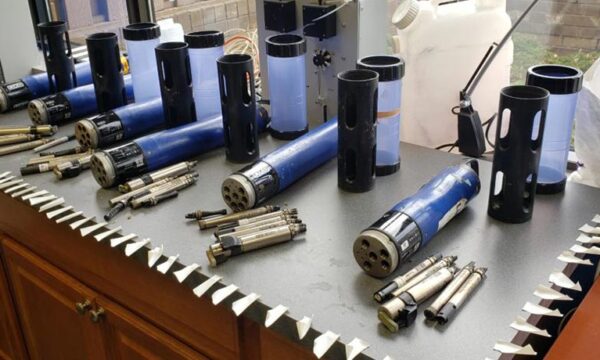
Sondes from the western basin of Lake Erie were cleaned and calibrated multiple times throughout the project. Photo by Ed Verhamme, Limnotech.
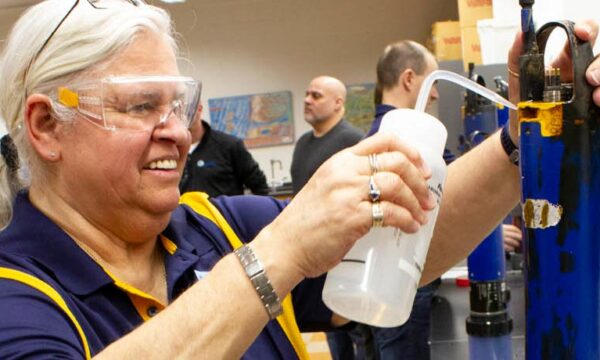
A researcher at the University of Toledo’s Lake Erie Center cleans grime off a a sonde during a calibration event.
